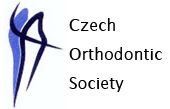


|
|
| Main Page | |
| Welcome message | |
| Overview | |
| Congress programme | |
| Honorary Lecture | |
| Pre-Congress Course | |
| Keynote Lectures | |
| Section for Assistants | |
| Section for Technicians | |
| Time schedule | |
| Abstract list | |
| Registration | |
| Accommodation | |
| Information for authors | |
| Forms and documents | |
| Contacts | |
| Archives | |
|
|
|
| About Bratislava | |
|
|
|


The Congress is organised by the Czech Orthodontic Society and Slovak Orthodontic Society. |
|
Prevention of cleft lip & palate: vision for the future
Peter Anthony Mossey 
Friday, September 20, 2019
The ultimate goal of improving knowledge on orofacial clefts (OFC) aetiology/causation and risk factors is to identify possibilities for primary prevention, and such risk factors are both environmental and genetic.
Attributable risk: It is important that aspects of nutrition, environmental exposures, lifestyle, behavioural factors and medical history are well recorded, and with measurement of environmental factors there is a shift towards biomarkers for precision of measurement. For genetic risk, through GWAS the landscape of genetic predisposition has changed significantly over the last five years and ever-improving high throughput molecular genetic technologies and computational facilities make the possibility of identification of genetic predisposition much more accessible and tangible. The studies to date also suggest that there are different genetic markers predisposing to OFC in different populations and possibly in different ethnic groups and different families also. The latter demands alternative approaches for the discovery of high risk genetic markers.
Future studies will concentrate much more on interactions between genetic and environmental factors, interactions between genes in the same or different pathways and epigenetic factors such as DNA methylation and its influence on genotype and risk of birth defects. Also there is a need to move to an implementation agenda in our research and ensure that inter-disciplinary, multi-centre collaborative studies accelerate the progress of public health in field of OFC.
Existing samples, datasets and initiatives: there are already many national and international initiatives that attempt to address the agenda of primary prevention and it would be useful to involve them in a large international network and to build up a directory of resources of what samples are available. One such organisation where this is being done and could be enhanced is in the new EU ERNs.
Vision for the future: the mark of success for the future prevention network is that there should be demonstrable progress in achieving primary prevention within a generation in most countries in the world. In the short term examine how prevention of clefts might fit in with strategies surrounding the UN Sustainable Development Goals (SDGs) and multi-centre collaborative research and precision medicine initiatives.
Back to the Keynote lectures list
v
| General partner |

|
|
|
| Main partners |

|

|
|
|
| Partners |

|

|
|
|
| Media partners |

|